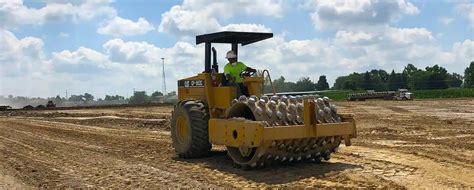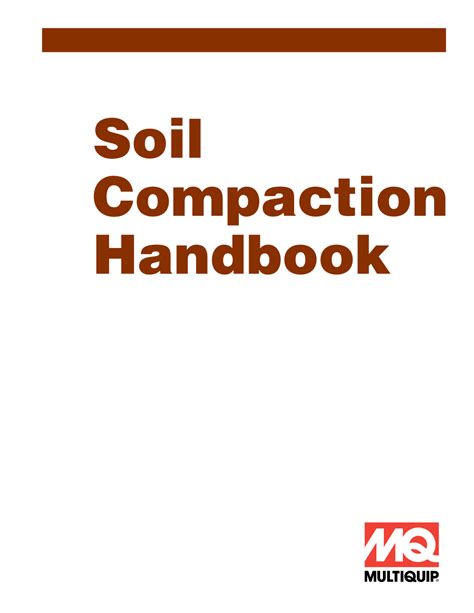compacting soil after excavation Compaction after excavation is the process of pressing down loosened soil to eliminate air pockets and increase soil density. This ensures that the ground can support structures and prevents future issues like settling, erosion, or water pooling. Chinese mini excavators have been gaining recognition for their quality, performance, and affordability. In this comprehensive guide, we explore the top brands and models in the market, highlighting the best Chinese mini excavators available to .
0 · Understanding Backfill Compaction Requirements
1 · The Importance of Soil Compaction in Construction
2 · Soil Compaction: Methods, Meaning, and Effects
3 · Soil Compaction Handbook
4 · SOIL COMPACTION AND STABILITY
5 · Proper Subgrade Prep
6 · How to Compact Soil After Excavation: Your Step
7 · Fundamentals of Soil Compaction
8 · Excavation and Backfilling of Soil – Work Sequence and Procedure
9 · Excavation and Backfilling of Soil
10 · Backfilling Trenches and Other Excavations
11 · 4
This catalogue was prepared exclusively for the exhibition 'Hoard of Chinese Porcelain: A Rare Discovery from Firozshah Kotla'. The exhibition presented one of the .
Compaction after excavation is the process of pressing down loosened soil to eliminate air pockets and increase soil density. This ensures that the ground can support structures and prevents future issues like settling, erosion, or water pooling.Learn about soil compaction, its types, methods, and effects on soil types and construction .Learn the sequence, procedure and quality checks for excavation and backfilling of soil for .
Learn how soil compaction is used to densify soil and reduce void space, and how different types of equipment are suitable for different soil types. Find out why soil compaction is crucial for construction projects and how to .
After soil is backfilled into a trench, the loose material is compacted using some .Learn the basics of soil compaction and stability, including the effects of moisture content, .Learn how soil compaction is achieved by applying mechanical energy to reduce voids ratio .
Compaction after excavation is the process of pressing down loosened soil to eliminate air pockets and increase soil density. This ensures that the ground can support .Learn about soil compaction, its types, methods, and effects on soil types and construction projects. Find out how to identify and classify soil, and how to achieve optimal density and . Backfilling happens after excavation, when the soil is compacted back into the trench or foundation. It is used to help protect foundations, roadways, walkways and other . Learn about soil compaction, the practice of applying mechanical effort to densify soil by reducing void space. Find out the factors, types and effects of soil compaction, and how .
Backfilling is the process of putting a mixture of soil, rocks or stones back into a trench or foundation after excavation, typically to bury a pipe. Compact proper backfill to .
Understanding Backfill Compaction Requirements

Learn the sequence, procedure and quality checks for excavation and backfilling of soil for foundation and trench construction. Find out the materials, tools, drawings and safety . Learn how soil compaction is used to densify soil and reduce void space, and how different types of equipment are suitable for different soil types. Find out why soil compaction is .
post driver skid steer attachment
After soil is backfilled into a trench, the loose material is compacted using some mechanical means, such as a compactor, an excavator, or a "jumping jack"-type compactor. .Learn the basics of soil compaction and stability, including the effects of moisture content, compactive effort, and soil classification. Find out how to achieve 92 percent compaction and .Learn how soil compaction is achieved by applying mechanical energy to reduce voids ratio and increase shear strength. Find out the factors affecting compaction, such as water content, soil .
Compaction after excavation is the process of pressing down loosened soil to eliminate air pockets and increase soil density. This ensures that the ground can support .Learn about soil compaction, its types, methods, and effects on soil types and construction projects. Find out how to identify and classify soil, and how to achieve optimal density and . Backfilling happens after excavation, when the soil is compacted back into the trench or foundation. It is used to help protect foundations, roadways, walkways and other .
The Importance of Soil Compaction in Construction
Learn about soil compaction, the practice of applying mechanical effort to densify soil by reducing void space. Find out the factors, types and effects of soil compaction, and how . Backfilling is the process of putting a mixture of soil, rocks or stones back into a trench or foundation after excavation, typically to bury a pipe. Compact proper backfill to .
Learn the sequence, procedure and quality checks for excavation and backfilling of soil for foundation and trench construction. Find out the materials, tools, drawings and safety . Learn how soil compaction is used to densify soil and reduce void space, and how different types of equipment are suitable for different soil types. Find out why soil compaction is .
After soil is backfilled into a trench, the loose material is compacted using some mechanical means, such as a compactor, an excavator, or a "jumping jack"-type compactor. .
Learn the basics of soil compaction and stability, including the effects of moisture content, compactive effort, and soil classification. Find out how to achieve 92 percent compaction and .

Soil Compaction: Methods, Meaning, and Effects


international skid steer 4130
how much does a skid steer bucket of dirt weigh
The hydraulic oil of the orchard agricultural Mini Excavator Made in China must be replaced in time, but what are the details you should pay attention to when replacing? Today, the editor will sort out the relevant information for you.
compacting soil after excavation|Soil Compaction Handbook